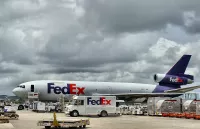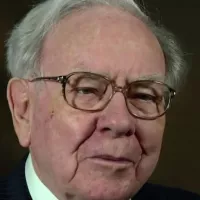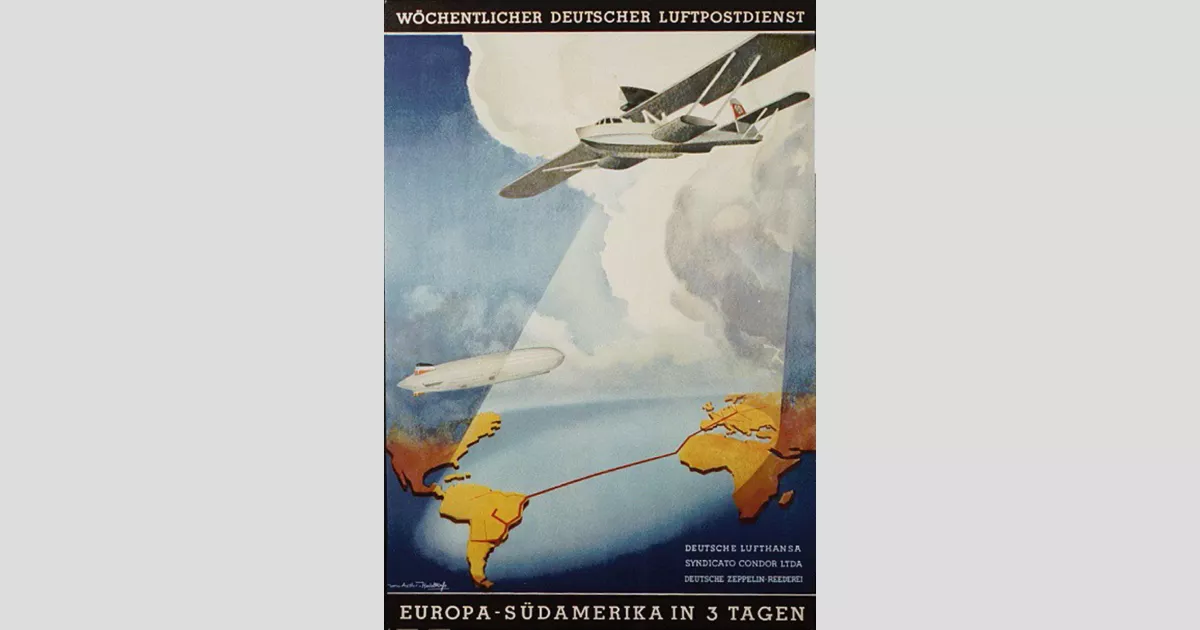Airlines are companies that offer air transport services for passengers and freight using aircraft. They may form partnerships with other airlines through codeshare agreements, where they jointly offer and operate flights. Airlines are typically recognized by an air operating certificate or license from a government aviation body. They can operate on a scheduled or charter basis.
November 16, 1909: DELAG Founded
The German airship company DELAG, the first airline, was founded on November 16, 1909.
January 1, 1914: First Scheduled Fixed-Wing Flight
The first scheduled fixed-wing airline flight took place on January 1, 1914, between St. Petersburg and Tampa, Florida, operated by the St. Petersburg–Tampa Airboat Line and piloted by Tony Jannus.
1916: Aircraft Transport and Travel Founded
Aircraft Transport and Travel, an ancestor of British Airways, was founded in 1916 by George Holt Thomas.
1917: Deutsche Luft-Reederei Founded
Deutsche Luft-Reederei was founded in 1917.
1918: Société des lignes Latécoère Established
Société des lignes Latécoère, later known as Aéropostale, began its first service to Spain in late 1918.
1918: US Postal Service Experiments with Air Mail
The US Postal Service started experimenting with air mail delivery in 1918, initially utilizing Curtiss Jenny aircraft, and marking the beginning of a transition towards air-based mail transportation.
February 1919: Chalk's International Airlines Begins Service
Chalk's International Airlines commenced operations between Miami and Bimini, Bahamas, in February 1919, later claiming to be the oldest continuously operating airline in the US until its closure in 2008.
February 1919: Deutsche Luft-Reederei Starts Operations
Deutsche Luft-Reederei, the first German airline to use heavier-than-air aircraft, started operations in February 1919.
July 15, 1919: First Proving Flight Across English Channel
Aircraft Transport and Travel conducted a proving flight across the English Channel on July 15, 1919, from RAF Hendon to Paris - Le Bourget Airport.
August 25, 1919: First Regular International Service
Aircraft Transport and Travel launched the world's first regular international service on August 25, 1919, between Hounslow Heath Aerodrome and Le Bourget Airport in Paris.
November 1919: First British Civil Airmail Contract
Aircraft Transport and Travel secured the first British civil airmail contract in November 1919, operating between Hawkinge and Cologne.
1919: Handley Page Transport Established
Handley Page Transport was established in 1919 and operated a London-Paris passenger service.
1919: Founding of KLM and Avianca
KLM (Netherlands) and Avianca (Colombia), two of the oldest non-airship airlines still operating, were founded in 1919.
1919: Other French Airlines Established
Other early French airlines were established in 1919, including Société Générale des Transports Aériens and Compagnie des Messageries Aériennes.
1920: Return of Aircraft to Royal Air Force
In 1920, the six Royal Air Force Airco DH.9A aircraft lent to Aircraft Transport and Travel for the airmail service were returned.
1920: KLM's First Flight
KLM, the oldest continuously operating airline, made its first flight in 1920 from Croydon Airport, London to Amsterdam.
1920: Qantas Founded
Qantas, the Australian airline, was founded in 1920.
1921: KLM Starts Scheduled Services
KLM started scheduled services in 1921.
1921: Chief Administration of the Civil Air Fleet Established
The Chief Administration of the Civil Air Fleet was established in the Soviet Union in 1921.
1921: D.L.R Network Expansion
The D.L.R. network expanded to over 3000 km, including destinations in the Netherlands, Scandinavia, and the Baltic Republics by 1921.
January 1923: Air Union Formed
Air Union was formed on January 1, 1923, through the merger of two French airlines.
July 1923: Dobrolyot Starts Operations
Domestic air service began in the Soviet Union when Dobrolyot started operations on July 15, 1923, between Moscow and Nizhni Novgorod.
September 1923: Aero O/Y Founded
Aero O/Y (now Finnair) was founded in Helsinki on 12th September 1923.
1923: Aeroflot Founded
Aeroflot, the Russian airline, was founded in 1923.
March 1924: Aero O/Y's First Flight
Aero O/Y's first flight took place on March 20, 1924, between Helsinki and Tallinn.
November 1924: First Airliner Ordered by Imperial Airways
The Handley Page W8f City of Washington, the first airliner ordered by Imperial Airways, was delivered on November 3, 1924.
1924: Imperial Airways Founded
Imperial Airways was formed in 1924 through the merger of four British airlines.
1924: Junkers Luftverkehr Becomes Separate Company
Junkers Luftverkehr, a division of the aircraft manufacturer Junkers, became a separate company in 1924.
April 1925: First In-Flight Movie
"The Lost World" became the first film shown on a scheduled airliner flight in April 1925, on the London-Paris route.
1925: Ford Trimotor and Profitable Passenger Service
In 1925, the Ford Motor Company's introduction of the all-metal Ford Trimotor, with its 12-passenger capacity, marked a shift toward potentially profitable passenger air service.
1926: Flight Routes Surveyed
Alan Cobham surveyed flight routes from the UK to Cape Town and Melbourne in 1926.
1926: Deutsche Lufthansa Created
Deutsche Lufthansa was created in 1926 through the merger of two airlines, one of them being Junkers Luftverkehr.
1927: Regular Service to Cairo and Basra
Regular air services to Cairo and Basra commenced in 1927.
1927: Aéropostale Relaunched
The air mail service to Morocco was bought out in 1927, renamed Aéropostale, and became a major international carrier.
1929: London-Karachi Service
The air service was extended to Karachi in 1929.
December 1930: Philippine Aerial Taxi Company Established
The Philippine Aerial Taxi Company (PATCO) was established in December 1930 by mining magnate Emmanuel N. Bachrach. It commenced commercial air service three weeks later, marking the beginning of Asia's first airline route.
1931: Graf Zeppelin's South America Service
In 1931, the Graf Zeppelin began offering regular passenger service between Germany and South America, operating approximately every two weeks until 1937.
October 1932: Tata Airlines Founded
Tata Airlines, later renamed Air India, was founded in October 1932 by J.R.D. Tata as a division of Tata Sons Ltd. J.R.D. Tata piloted the inaugural flight carrying air mail from Karachi to Bombay via Ahmedabad on October 15, 1932.
1932: Aeroflot Name Established
Since 1932 all operations had been carried under the name Aeroflot.
1932: London-Australia Service Inaugurated
The London-Australia air service was inaugurated in 1932.
May 1933: Air France Established
Air France was established on May 17, 1933, through the merger of Air Union and four other French airlines.
1933: Aéropostale Merged into Air France
Aéropostale went bankrupt, was nationalized, and merged into Air France in 1933.
March 1936: London-Hong Kong Service Established
Passengers departed London for Hong Kong on March 14, 1936, following the establishment of a branch from Penang.
1936: Hindenburg Passenger Service Begins
The Hindenburg airship started its passenger service in 1936, successfully crossing the Atlantic multiple times before its tragic crash in 1937.
May 1937: Hindenburg Disaster
In May 1937, the Hindenburg airship, after completing 36 successful transatlantic crossings, crashed in Lakehurst, New Jersey.
1937: Bachrach's Death
The death of Emmanuel N. Bachrach, the founder of PATCO, occurred in 1937. This event paved the way for PATCO's eventual merger with Philippine Airlines in 1941.
1938: Berlin-Kabul Air Service
A weekly air service connecting Berlin and Kabul, Afghanistan, was established in 1938.
1939: End of Deutsche Lufthansa's Transoceanic Service
Deutsche Lufthansa's pioneering transoceanic airmail service, which began in 1934, ended in 1939 due to the start of World War II.
1939: Soriano Acquires PATCO
In 1939, beer magnate Andres R. Soriano acquired the majority share in PATCO from Bachrach's estate, following the advice of General Douglas MacArthur. This acquisition led to the merger with the newly formed Philippine Airlines.
February 26, 1941: Philippine Airlines Officially Founded
Philippine Airlines (PAL) was officially founded on February 26, 1941. However, its operating license originated from the Philippine Aerial Taxi Company (PATCO), established in December 1930.
March 1941: PATCO Merges with Philippine Airlines
In March 1941, PATCO merged with Philippine Airlines (PAL), with PAL as the surviving entity. This merger solidified PAL's position as Asia's oldest airline still in operation.
July 1946: Tata Airlines Becomes Air India
Following World War II and India's independence, Tata Airlines became a public limited company on July 29, 1946, under the name Air India. The Government of India acquired 49% of the airline and granted it flag carrier status for international operations as Air India International.
July 1946: Philippine Airlines First Transpacific Flight
On July 31, 1946, Philippine Airlines (PAL) made history with the first transpacific flight by an Asian airline. A chartered DC-4 carried 40 American servicemen from Manila to Oakland, California, with several stops along the way.
September 1946: Cathay Pacific Founded
Cathay Pacific was founded in September 1946, marking the beginning of its journey as a major airline in the Asian region.
October 1946: Orient Airways Founded
Orient Airways, which later became Pakistan International Airlines, was founded in October 1946, contributing to the growth of air travel in the region.
1946: Cathay Pacific Launched
Cathay Pacific was one of the first airlines launched in Asia in 1946, alongside other carriers. The federal government granted the license to operate after reviewing the necessity at the national assembly.
1947: Air Ceylon and Malayan Airways Founded
Air Ceylon (later SriLankan Airlines) and Malayan Airways Limited (later Singapore and Malaysia Airlines) were both founded in 1947 as part of the post-war expansion of air travel.
1949: Garuda Indonesia Founded
Garuda Indonesia, the flag carrier of Indonesia, was founded in 1949.
1951: Japan Airlines Founded
Japan Airlines was established in 1951, playing a crucial role in the development of Japan's aviation industry.
September 1956: First Sustained Jet Service
Aeroflot became the world's first airline to operate sustained regular jet services in September 1956, utilizing the Tupolev Tu-104.
October 1958: Transatlantic Jet Flights Begin
In October 1958, both British Overseas Airways Corporation (BOAC) and Pan Am launched transatlantic jet flights using the Comet 4 and Boeing 707 respectively, ushering in a new era of faster international travel.
1960: Thai Airways Founded
Thai Airways International was founded in 1960 and became the flag carrier of Thailand.
1963: Finnair's Safety Record
As of 1963, Finnair held a notable safety record with no fatal or hull-loss accidents since that year.
1969: Concorde's First Flight
The Concorde, a supersonic aircraft, took its first flight in 1969, paving the way for faster air travel and operating until 2003.
1972: Airbus Production Begins
Airbus started producing its commercially successful line of airliners in 1972, focusing on increased passenger capacity, payload, and range.
1978: Restructuring and Management Companies
After deregulation in 1978, US airlines underwent restructuring, with many becoming subsidiaries of management companies, impacting their financial control.
1978: Impact of Deregulation and Loss Leader Pricing
Following deregulation in 1978, major airlines used aggressive pricing strategies, such as loss leader pricing, to maintain dominance, impacting both industry revenue and service quality.
1978: Airline Deregulation and Subsequent Financial Performance
Following the 1978 deregulation, U.S. carriers experienced a period of financial instability, with 12 unprofitable years out of 31. However, from 2010, they achieved eight consecutive years of profit by adapting their strategies.
1978: Airline Deregulation and Consolidation
Since the 1978 Airline Deregulation Act in the U.S., over 200 airlines have merged, been acquired, or ceased operations. This consolidation trend is driven by the desire for greater efficiency and economies of scale, with international airline managers lobbying for more consolidation opportunities.
1978: Deregulation and its Critics
The 1978 deregulation of the US airline industry faced criticism, with figures like former American Airlines CEO Robert Crandall highlighting its negative impact on legacy carriers and their financial stability.
1978: US Airline Deregulation
The deregulation of the US airline industry in 1978 lowered barriers for new airlines but coincided with an economic downturn, presenting challenges for both new and existing carriers.
1980: Airline Industry Profitability and Investment
Since 1980, the airline industry has struggled to earn back the cost of capital, even during profitable periods. The industry experiences cyclical financial performance, with periods of poor earnings followed by periods of improvement, although net profit margins remain low (2-3%).
1988: Asiana Airlines Launched
Asiana Airlines, another prominent Asian carrier, was launched in 1988. Asiana Airlines later joined Star Alliance in 2003.
1990: Increase in Greenhouse Gas Emissions from Aviation
Between 1990 and 2006, greenhouse gas emissions from aviation in the EU increased by 87%, while terminal passengers in the UK increased from 100,000,000 to 250,000,000.
1990: US Airline Bankruptcies
Since 1990, numerous US airlines, including major carriers like American Airlines, Continental Airlines, Delta Air Lines, Northwest Airlines, Pan Am, United Airlines, and US Airways, have filed for Chapter 11 bankruptcy.
December 1991: Pan Am Collapse
The collapse of Pan Am in December 1991 highlighted the financial challenges faced by major airlines.
1992: Airline Profitability Analysis
Analysis of the period from 1992 to 1996 revealed that other players in the air transport chain, such as airports, catering companies, and aircraft lessors, were significantly more profitable than airlines.
1996: Airline Profitability Analysis
Analysis of the period from 1992 to 1996 revealed that other players in the air transport chain, such as airports, catering companies, and aircraft lessors, were significantly more profitable than airlines.
1999: Fuel Hedging and Southwest Airlines
Between 1999 and the early 2000s, Southwest Airlines successfully utilized fuel hedging to maintain strong business profits. This practice involves using contractual tools to mitigate the risks of volatile fuel costs.
1999: Warren Buffett's Comment on Airline Industry Profits
In 1999, Warren Buffett remarked that the cumulative profit of all U.S. airlines since the dawn of aviation was zero.
2000: Airline Industry Losses
Between 2000 and 2005, US airlines experienced significant financial losses, totaling $30 billion. This period also saw wage cuts exceeding $15 billion and 100,000 layoffs.
2000: Fuel Hedging and Rising Costs
Between 2000-2005, the rising cost of fuel became a major financial issue for airlines, impacting legacy carriers with older, less fuel-efficient aircraft more significantly. Fuel hedging became important to control costs during periods of increasing fuel prices.
2000: SkyTeam Founded
SkyTeam, a major airline alliance, was founded in 2000 with Korean Air as one of its four founding members.
2001: Growth of Domestic Air Transport in China
From 2001 to 2006, domestic air transport in China grew annually at 15.5%, compared to a 3.7% global growth rate.
December 31, 2001: Air Transportation Safety and System Stabilization Act
On December 31, 2001, Congress passed the Air Transportation Safety and System Stabilization Act (ATSSB) to address the airline industry's liquidity crisis following the September 11 attacks. The ATSSB provided financial aid to carriers to cover losses from the four-day federal shutdown and the attacks' impact.
2003: Asiana Airlines Joins Star Alliance
Asiana Airlines joined the Star Alliance in 2003, further expanding its global reach and network.
2003: End of Concorde Operations
Concorde operations ended in 2003, marking the end of commercial supersonic air travel.
2004: KLM and Air France Merger
KLM, one of the first airlines to form an alliance (with Northwest Airlines), merged with Air France in 2004. Both airlines subsequently joined the SkyTeam alliance.
2005: Airline Industry Losses
Between 2000 and 2005, US airlines experienced significant financial losses, totaling $30 billion. This period also saw wage cuts exceeding $15 billion and 100,000 layoffs.
2005: Fuel Hedging and Rising Costs
By 2005, rising fuel costs became a major financial issue for airlines, impacting legacy carriers with older, less fuel-efficient aircraft more significantly. Fuel hedging became important to control costs during periods of increasing fuel prices like the period of 2000-2005.
2005: Fuel Efficiency of Piston-Powered Aircraft
By 2005, the last piston-powered aircraft were as fuel-efficient as the average jet aircraft according to some reports.
2006: Growth and Emissions in Aviation
Between 1990 and 2006, greenhouse gas emissions from aviation in the EU rose by 87%, coinciding with a significant increase in air travel. In China, domestic air transport grew by 15.5% annually from 2001 to 2006. European airlines transported 750 million passengers annually and handled 40% of Europe's merchandise value. Despite this growth, airlines prioritized fuel efficiency to lower costs.
2008: Chalk's International Airlines Closes
Chalk's International Airlines, which began operations in 1919, ceased operations in 2008.
2008: Impact of Rising Oil Prices
In 2008, rising oil prices significantly impacted the airline industry, causing difficulties for national airlines such as Italy's Alitalia.
2010: U.S. Airline Industry Rebound
After the 1978 deregulation and subsequent financial struggles, the U.S. airline industry rebounded in 2010, achieving eight consecutive years of profit through strategic adjustments like route optimization and capacity control.
2011: Latin American Air Travel Market Growth
In 2011, the Latin American air travel market experienced rapid growth, with industry estimates projecting over 2,000 new aircraft entering service in the region over the next five years.
2013: Electric Aircraft Projects
As of 2013, several projects on electric aircraft were underway, with some fully operational.
July 2015: Global Airline Capacity
In July 2015, the total weekly airline capacity was a basis for comparison for the growth seen in July 2016 when it increased by 6.9%.
2015: Airline Alliances Dominate Air Traffic
By 2015, the three major airline alliances (Star Alliance, SkyTeam, and Oneworld) controlled over 60% of global commercial air traffic. These alliances coordinate passenger services, offer interline tickets, and engage in codesharing.
2015: Drop in Fuel Prices and Limited Consumer Savings
Following a considerable drop in fuel prices in 2015, consumers saw minimal savings due to industry consolidation and the dominance of four large firms in the US airline industry.
July 2016: Global Airline Capacity
In July 2016, the total weekly airline capacity reached 181.1 billion available seat kilometers, a 6.9% increase compared to July 2015. Asia-Pacific accounted for the largest share of this capacity.
2016: Global Airline Industry Statistics
The air transport industry generated $704.4 billion in revenue in 2016, employed 10.2 million workers, and supported 65.5 million jobs and $2.7 trillion of economic activity, representing 3.6% of the global GDP.
2017: Global Airline Industry Statistics
In 2017, the global airline industry carried 4.1 billion passengers on 41.9 million scheduled flights, covering 7.75 trillion passenger kilometers. The industry generated $704.4 billion in revenue and supported 65.5 million jobs, contributing 3.6% to the global GDP.
February 2018: Airline Price Comparison
In February 2018, a price comparison by rome2rio revealed Tigerair Australia and AirAsia X as the cheapest airlines, while Charterlines, Inc. and Buddha Air were the most expensive.
2018: Projected Revenue Increase and Profit Decrease
IATA projected a 10.7% increase in global airline industry revenue to $834 billion in 2018, but with a 12% decrease in profit to $33.8 billion due to rising fuel and labor costs.
2019: Largest Airlines by Various Metrics
In 2019, different airlines led in various categories: American Airlines Group (fleet size, passengers carried, revenue passenger mile), Delta Air Lines (revenue, assets, market capitalization), Lufthansa Group (employees), FedEx Express (freight tonne-kilometres), Turkish Airlines (countries served), and UPS Airlines and United Airlines (destinations served).
Mentioned in this timeline
California is a U S state on the Pacific Coast...

FedEx Corporation originally Federal Express is a multinational conglomerate based...

Warren Buffett is a highly successful American investor and philanthropist...
The Union of Soviet Socialist Republics USSR existed from to...
India officially the Republic of India is a South Asian...
Colombia officially the Republic of Colombia is a country located...
Trending
1 month ago Harrison Mevis to debut as Rams kicker against 49ers in Week 10.

5 months ago Kyrie Irving Claims Bill Gates Owns Most US Land and Water, Calls It Weird

9 months ago Jenny McCarthy calls marriage to Donnie Wahlberg the 'cherry on top' of life.

Blake Corum is an American football running back for the Los Angeles Rams He achieved significant accolades at the University...

17 days ago Chris Pratt and Anna Faris share friendly hug during Thanksgiving reunion years after divorce.
14 days ago Erika Kirk Leads Turning Point USA, Continues Second Amendment Support After Husband's Death
Popular

Candace Owens is an American conservative political commentator and author...

Tucker Carlson is an American conservative political commentator known for...

XXXTentacion born Jahseh Dwayne Ricardo Onfroy was a controversial yet...

Ilhan Omar is an American politician currently serving as the...

Kashyap Pramod Patel is an American lawyer who became the...

Frederick Christ Trump Sr - was an American real estate...
